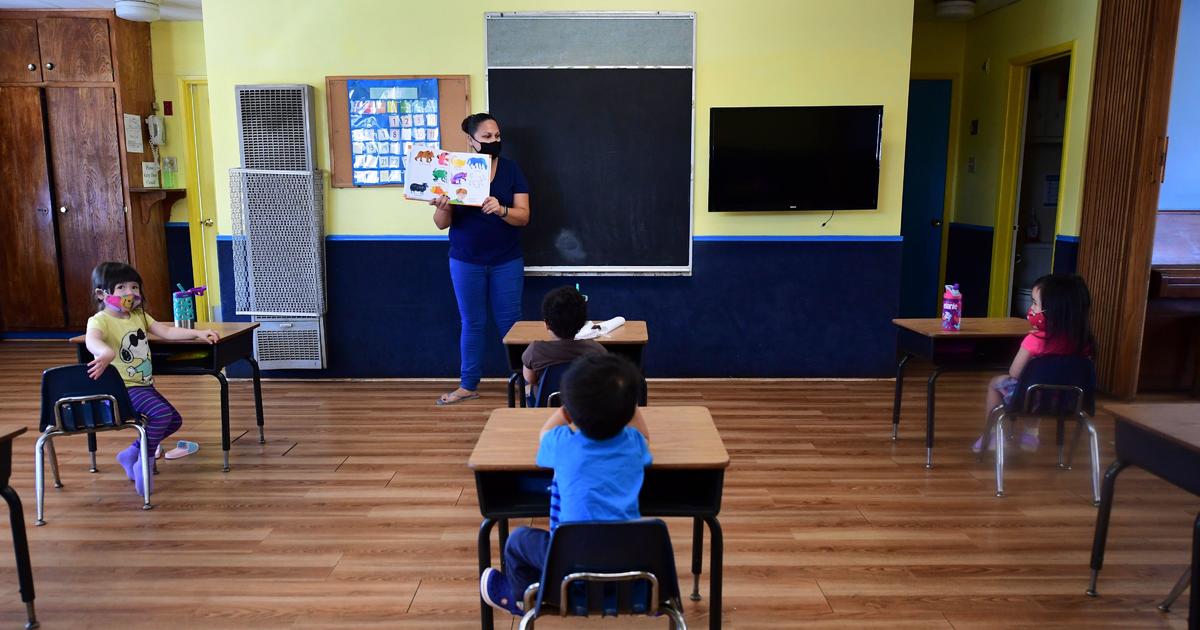The number and rate of coronavirus cases in children in the U.S. have been “steadily increasing” between March and July, according to new guidance released Friday by the Centers for Disease Control and Prevention. The surge in cases comes as schools across the country struggle with returning to in-person learning.
While children make up about 22% of the nation’s population, they only account for about 7.3% of all COVID-19 cases, as of August 3. The CDC said that tracking coronavirus cases in children has been difficult due to a lack of widespread testing and the prioritization of testing for adults.
The CDC said that transmission of the virus among kids may have been lower in the spring and summer due to strict stay-at-home orders, warning that trends are likely to change after the return to in-person learning and other activities.
The incubation period of COVID-19 is about the same in children and adults: 2-14 days, with an average of 6 days. Symptoms are also similar, including fever, fatigue, cough, loss of taste or smell, shortness of breath or difficulty breathing, among other things.
The CDC said that at least 16% of children with the coronavirus are asymptomatic. However, the CDC also cautioned that evidence suggests as many as 45% of these cases are asymptomatic.
A new report from the American Academy of Pediatrics noted a 90% increase in pediatric cases from July 9 to August 6. During the last two weeks of July alone, more than 97,000 children tested positive, according to the AAP.
Pediatrics group releases grim virus figure
03:34
Some government officials, including President Trump, have falsely claimed the virus poses a significantly reduced risk to children, urging states to return to full in-person learning. But the new CDC guidance says children can still develop severe illness and complications from the virus, even if their risk is lower compared to adults.
The CDC also said the rate of hospitalizations in children is increasing. One-third of hospitalized children are admitted to the ICU — the same rate as adults.
There is also concern that children returning to school and other activities will pass the virus to higher-risk family members. “Recent evidence suggests that children likely have the same or higher viral loads in their nasopharynx compared with adults and that children can spread the virus effectively in households and camp settings,” the CDC said.
Many schools and universities have already had to readjust their reopening strategies following skyrocketing positive cases among students and teachers in just the first few weeks of classes. Many teachers have opted to resign or retire early to avoid putting themselves and their families at risk.
In the past two weeks alone, Florida reported 8,399 new cases among children under the age of 18. Despite the surge, high school sports in the virus epicenter were officially approved Friday to resume this fall.
In New York City, home to the nation’s largest school district, Mayor Bill de Blasio announced a return to in-person schooling in the fall, as cases across the state have declined. Students will return with a “blended learning” model, with most students attending in-person classes two or three days a week, and learning online the other days.
In California, Governor Gavin Newsom said over 90% of students will begin the school year from home. The state has the highest number of cases in the country, surpassing 600,000 this week, despite being the first to issue a stay-at-home order.
The percentage of positive test results in 34 states is higher than the recommended level for reopening. Dr. Anthony Fauci, the nation’s top infectious disease expert, said this week, “Bottom line is, I’m not pleased with how things are going.”
